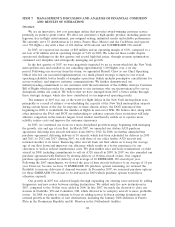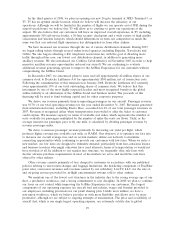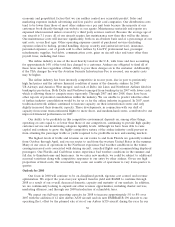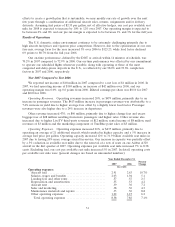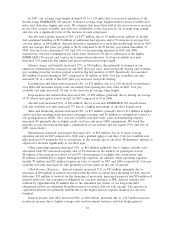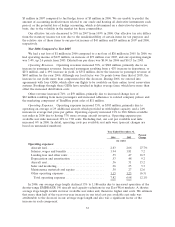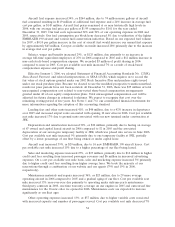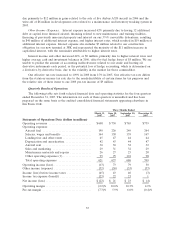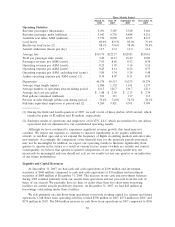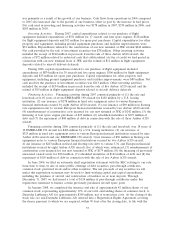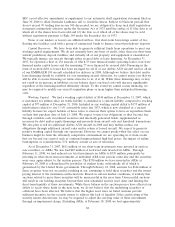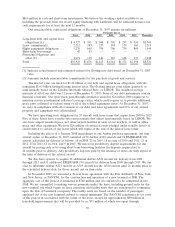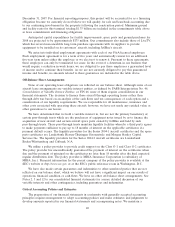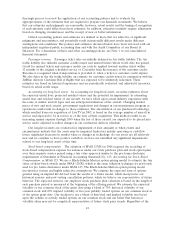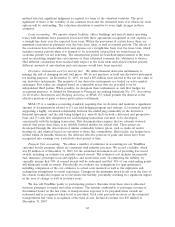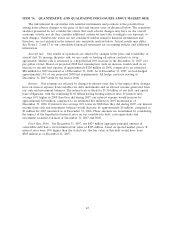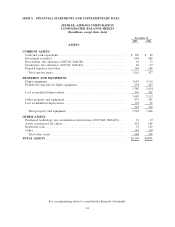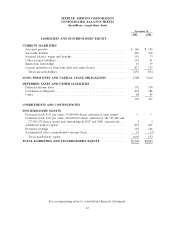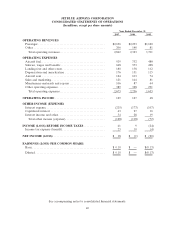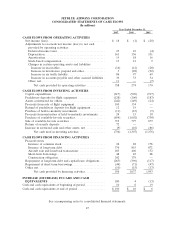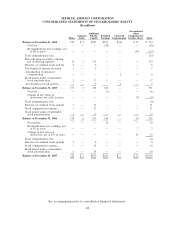JetBlue Airlines 2007 Annual Report Download - page 48
Download and view the complete annual report
Please find page 48 of the 2007 JetBlue Airlines annual report below. You can navigate through the pages in the report by either clicking on the pages listed below, or by using the keyword search tool below to find specific information within the annual report.SEC a post-effective amendment or supplement to our automatic shelf registration statement filed on
June 30, 2006 to allow Deutsche Lufthansa AG to resell the shares. Subject to blackout periods that
do not exceed 90 trading days in any 365-day period, we are obligated to keep such shelf registration
statement continuously effective under the Securities Act of 1933 until the earlier of (1) the date as of
which all of the shares have been sold and (2) the date as of which all of the shares may be sold
without registration pursuant to Rule 144 under the Securities Act of 1933.
None of our lenders or lessors are affiliated with us. Our short-term borrowings consist of two
floating rate facilities, each with a group of commercial banks to finance aircraft predelivery deposits.
Capital Resources. We have been able to generate sufficient funds from operations to meet our
working capital requirements. We do not currently have any lines of credit, other than our short-term
aircraft predelivery deposit facilities, and virtually all of our property and equipment is encumbered.
We typically finance our aircraft through either secured debt or lease financing. At December 31,
2007, we operated a fleet of 134 aircraft, of which 53 were financed under operating leases, four were
financed under capital leases and the remaining 77 were financed by secured debt. Financing in the
form of secured debt or leases has been arranged for all 12 of our Airbus A320 aircraft and for all six
of our EMBRAER 190 aircraft scheduled for delivery in 2008. Although we believe that debt and/or
lease financing should be available for our remaining aircraft deliveries, we cannot assure you that we
will be able to secure financing on terms attractive to us, if at all. While these financings may or may
not result in an increase in liabilities on our balance sheet, our fixed costs will increase significantly
regardless of the financing method ultimately chosen. To the extent we cannot secure financing, we
may be required to modify our aircraft acquisition plans or incur higher than anticipated financing
costs.
Working Capital. We had a working capital deficit of $140 million at December 31, 2007, which
is customary for airlines since air traffic liability is classified as a current liability, compared to working
capital of $73 million at December 31, 2006. Included in our working capital deficit is $175 million of
indebtedness related to our 3
1
⁄
2
%convertible notes due 2033, which is now classified as a current
liability because we expect holders of these notes to exercise their option to have us repurchase them
on their first purchase date of July 15, 2008. We expect to meet our obligations as they become due
through available cash, investment securities and internally generated funds, supplemented as
necessary by debt and/or equity financings and proceeds from aircraft sale and leaseback transactions.
We also plan to sell six additional Airbus A320 aircraft in 2008 and may further reduce our
obligations through additional aircraft sales and/or return of leased aircraft. We expect to generate
positive working capital through our operations. However, we cannot predict what the effect on our
business might be from the extremely competitive environment we are operating in or from events
that are beyond our control, such as continued unprecedented high fuel prices, the impact of airline
bankruptcies or consolidations, U.S. military actions or acts of terrorism.
As of December 31, 2007, $611 million of our short-term investments were invested in auction
rate securities, or ARSs. We also had $45 million of restricted cash invested in ARSs. Through
February 11, 2008, we had reduced our total investments in ARSs to $330 million, principally by
investing in other short-term investments as individual ARS reset periods came due and the securities
were once again subject to the auction process. The $330 million we have invested in ARSs at
February 18, 2008 is collateralized by portfolios of student loans, substantially all of which is
guaranteed by the United States government. Through February 18, 2008, auctions for $144 million of
these securities were not successful, resulting in our continuing to hold these securities and the issuers
paying interest at the maximum contractual rate. Based on current market conditions, it is likely that
auctions related to more these securities will be unsuccessful in the near term. Unsuccessful auctions
will result in our holding securities beyond their next scheduled auction reset dates and limiting the
short-term liquidity of these investments. While these failures in the auction process have affected our
ability to access these funds in the near term, we do not believe that the underlying securities or
collateral have been affected. We believe that the higher reset rates on failed auctions provide
sufficient incentive for the security issuers to address this lack of liquidity. If the credit rating of the
security issuers deteriorates, we may be required to adjust the carrying value of these investments
through an impairment charge. Excluding ARSs, at February 18, 2008, we had approximately
38


